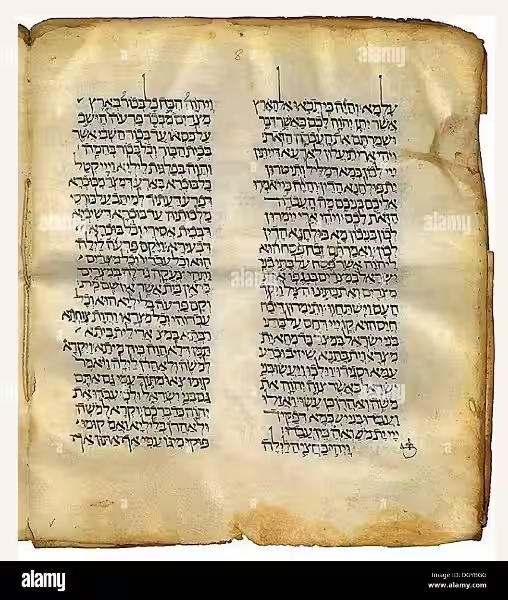Unveiling the Mysteries: The Aramaic Translation of the Bible

The Aramaic translation of the Bible, often overlooked in favor of Hebrew and Greek versions, offers a unique and potentially transformative perspective on biblical scholarship. For centuries, scholars have predominantly relied on the Hebrew Bible (Tanakh) and the Greek Septuagint for understanding the scriptures. But what if the original language spoken by Jesus and his contemporaries held keys to a richer, more nuanced interpretation? This article explores the significance of Aramaic translations, their implications for biblical understanding, and the ongoing scholarly debate surrounding their use.
The Historical Context of Aramaic
Aramaic, a Northwest Semitic language, served as the lingua franca of the Near East during the time of Jesus and the early development of Christianity. This historical context is crucial to understanding the potential significance of Aramaic scriptures.
The common belief that the New Testament was originally written in Greek often overshadows the likelihood that Jesus and his apostles primarily spoke and interacted in Aramaic. Therefore, an Aramaic text, if available, might preserve linguistic nuances and cultural subtleties irrevocably lost in later translations. This linguistic proximity to the original events could offer insights impossible to glean from later translations, no matter how meticulous.
Aramaic Versions: Targumim and the Peshitta
The Aramaic translations of the Bible fall into two main categories: the Jewish Targumim and the Christian Peshitta. These represent distinct branches of interpretation, reflecting the unique theological perspectives of their respective communities.
The Targumim: Jewish Aramaic Interpretations
The Targumim are Aramaic paraphrases of the Hebrew Bible, used in synagogues to make the text accessible to the broader community. These are not simply word-for-word translations, but rather interpretive renderings that often reflect rabbinic traditions and understandings. They offer a valuable window into the evolving interpretations of Jewish scripture.
The most prominent Targum is the Targum Onkelos, a translation of the Torah (Pentateuch) highly respected within Rabbinic Judaism. Other Targumim exist for other parts of the Tanakh, each adding to a vast and multifaceted body of Jewish exegesis.
The Peshitta: The Syriac Bible
The Peshitta, a Syriac (Eastern Aramaic) translation of the Bible, is central to Syriac Christianity. This translation, meaning "simple" or "common," held significant sway across various Christian communities for many centuries. Its importance extends beyond its use in liturgical settings; it also played a crucial role in the development of Syriac Christian theology and has remained an influential text throughout history.
It is essential to note that the Peshitta is not a single, monolithic text. Various manuscripts exist, with minor textual variations, reflecting the complexities of transmission and interpretation over time.
Specific Examples and Scholarly Debate
TheAramaicScriptures.com advocates for the superiority of Aramaic translations, highlighting instances where they believe the Aramaic originals offer interpretations that differ significantly from those derived from Hebrew or Greek.
For example, subtle shifts in word choice or grammatical structures in Aramaic can significantly impact the interpretation of key passages relating to Jesus's teachings or prophetic pronouncements. However, these claims are not universally accepted. Some scholars argue that the focus on Aramaic might overshadow the importance of existing translations, while others question the methodology employed in interpreting the Aramaic texts themselves. The debate revolves around the degree to which these linguistic differences alter theological understanding.
The central issue is the potential for bias in interpretation. Even with the most careful scholarship, the act of translation inherently involves choices, implying a degree of interpretation. This is further complicated by the fact that Aramaic itself, like any language, evolved over time, leading to potential ambiguity in interpreting older texts.
The Value of Aramaic Study
Regardless of the debate surrounding the ultimate implications of Aramaic translations, the study of Aramaic itself holds immense value for biblical scholarship. Understanding the original language offers a deeper appreciation for the historical and cultural context of the scriptures.
Learning Aramaic provides access to a wider range of primary sources, including non-canonical texts and other writings that illuminate the religious and social landscape of the time. This deeper understanding can enrich one's comprehension of the Bible, regardless of one's theological perspective. Moreover, it allows for a more direct engagement with the historical linguistic context of the scriptures, enriching one's understanding of the religious heritage.
Conclusion: A Continuing Conversation
The debate surrounding the Aramaic translation of the Bible is a complex and ongoing one. While the historical importance of Aramaic is undeniable, the extent to which its use significantly alters theological interpretations remains a subject of scholarly discussion. However, regardless of where one stands on this debate, the study of Aramaic provides invaluable insights into the historical and linguistic context surrounding the Bible, enriching our understanding of scripture and its enduring legacy. The Aramaic translation of the Bible remains a compelling avenue for deeper engagement with the religious texts that shape our world.
Frequently Asked Questions: Aramaic Translations of the Bible
What is the significance of Aramaic translations of the Bible?
Aramaic translations of the Bible, including the Jewish Targumim and the Christian Peshitta and others, offer a unique perspective on biblical texts. Proponents argue that because Aramaic was the common language of the Near East during the relevant historical period, understanding these translations provides a deeper and more accurate interpretation than those based solely on Hebrew or Greek. These translations may reveal nuances of meaning, cultural context, and wordplay lost in later translations. However, it's important to note that this view is not universally accepted within the scholarly community, and the extent to which Aramaic translations fundamentally alter theological interpretations remains a subject of ongoing debate.
What are the key differences between Aramaic and other biblical translations?
The primary difference lies in the language itself. Aramaic translations, particularly those closer to the time of the events described in the Bible, potentially preserve linguistic features, cultural idioms, and subtle word choices that might be lost or altered in later translations into Greek or Hebrew. These differences could affect the interpretation of specific passages, emphasizing certain aspects of teachings or altering the understanding of prophetic texts. However, the significance of these differences, and the methodology used to highlight them, are points of ongoing scholarly discussion.
Are Aramaic translations more accurate than Hebrew or Greek versions?
The question of "accuracy" is complex. While Aramaic was likely the vernacular of Jesus and his contemporaries, suggesting a closer proximity to the original spoken word, none of the extant Aramaic texts are considered direct transcriptions of an original autography. All versions, including Aramaic, are subject to their own processes of transmission and interpretation. Therefore, claiming one translation is definitively "more accurate" is an oversimplification of a complex scholarly debate. Aramaic translations offer a valuable perspective, but they shouldn't be considered superior in all respects.
What are some examples of important Aramaic translations?
The most prominent examples include: the Jewish Targumim (especially the Targum Onkelos), which provided verse-by-verse interpretations of the Hebrew Bible; and the Christian Peshitta, a widely used Syriac (Eastern Aramaic) translation of both the Old and New Testaments. Other significant Syriac translations include the Diatessaron, Old Syriac versions (Curetonian and Sinaitic), the Philoxenian version, and the Harklean version. The Palestinian Aramaic (Syrpal) version offers unique textual traditions. These diverse translations demonstrate Aramaic's lasting importance in interpreting biblical texts across Jewish and Christian traditions.
Where can I learn more about Aramaic and its biblical translations?
Studying Aramaic itself is crucial for comprehensive understanding. Resources available online and in academic settings include language courses, lexicons (dictionaries), and scholarly articles. Many universities offer courses in biblical Aramaic and related linguistic fields. Engaging with scholarly literature focusing on the specific Aramaic translations and their interpretations will provide a deeper level of understanding. However, it's crucial to approach this subject critically, considering the diverse perspectives and ongoing debates within the scholarly community.








